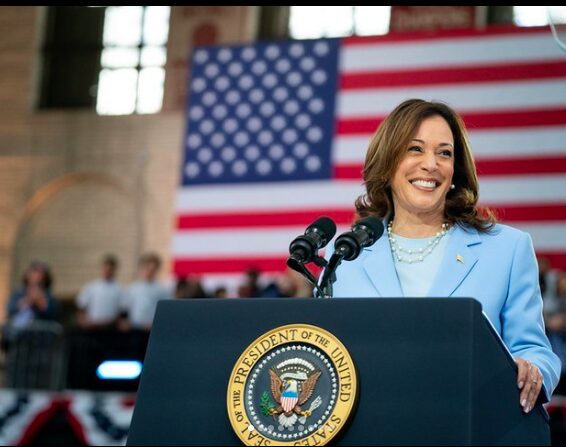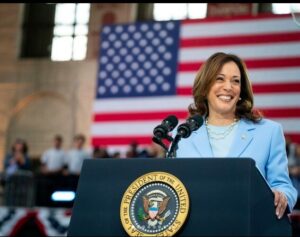Vice President Kamala Harris’s recent presidential campaign, despite raising over $1 billion, is now facing financial scrutiny, reportedly ending with $20 million in debt and $118 million in remaining funds as of mid-October. Granted Harris started way behind her opponent Donald Trump as President Joe Biden didn’t drop out of the race until July 21.

This massive fundraising effort, by affinity groups like Win With Black Women and White Dudes for Harris, was paired with an ambitious spending strategy that focused on celebrity endorsements, media-heavy appearances, and targeted ad campaigns — a formula that attracted both attention and criticism.
When Biden dropped out his re-election campaign was officially been renamed “Harris for President,” based on new Federal Election Commission filings, Politico reported. Harris gained control over the campaign’s financial resources. By the end of June, the campaign had reported funds totaling approximately $95 million. Then Harris’s camp went into high-gear raising more money.
A Look At Who Gave What to Harris
In addition to individual donations, funneled by these groups, according to OpenSecrets, major donors like Future Forward USA donated $136,459,651, American Bridge 21st Century donated $39,263,770, Asana donated $38,043,618, Bloomberg LP donated $19,232,155, League of Conservation Voters donated $15,434,257, Democracy PAC donated, $15,150,000, Greylock Partners donated $11,803,800, Ripple donated $11,687,371 and Evidence For Impact (DC) donated $10,200,000 to the campaign, hoping to support the campaign and its strategy.
Critics argue that instead of mobilizing voters, the funds were used on unnecessary expenses that drained campaign resources. From A-list endorsements to splashy ad buys, Harris’s strategy highlights the evolving role of pop culture in politics, even as questions linger about the return on investment. One key name that came up was media maven Oprah Winfrey.
The Oprah Payments and Celebrity Controversy
Among the campaign’s most scrutinized expenditures were two payments of $500,000 each to Oprah Winfrey’s Harpo Productions, revealed through Federal Election Commission filings.
These payments, made after Winfrey appeared at a the Vice President‘s town hall event and shortly before a rally in Philadelphia, quickly stirred controversy online, according to the Washington Examiner, in an article about how she “plowed through $1 billion.”
Social media users and critics suggested that Harris’s team was essentially “buying” Oprah’s endorsement.
A Harpo Productions spokesperson clarified that the payments were strictly for “production costs” and that “Oprah Winfrey was at no point during the campaign paid a personal fee, nor did she receive a fee from Harpo.”
The “Selma” star also denied being paid by either the campaign or her production company in an impromptu interview by a TMZ reporter after the election. She said flatly, “No true,” adding, “I’m not talking about the election.”
This statement sought to distance Winfrey from any direct financial gain, but it did little to silence skeptics who saw the large payments as symptomatic of the campaign’s broader spending problem.
Influencer Marketing and the $4 Million Bill to a Hollywood Talent Agency
Harris’s campaign heavily relied on social media influencers and celebrities, spending almost $4 million through Village Marketing Agency, a company known for connecting clients with influential figures online, Fox News reported.
This initiative saw big name celebrities like Beyoncé, Bon Jovi, Ricky Martin, Katy Perry, and Meg Thee Stallion publicly supporting Harris, aiming to appeal to younger, social media-savvy voters.
While the Harris team’s endorsement list was impressive, the effectiveness of celebrity endorsements in securing votes will long been debated.
Critics argue that these appearances create momentary buzz but do not necessarily drive political engagement, especially with demographics focused on economic and policy issues over star power.
Expensive Media Appearances and Digital Outreach
The campaign also invested substantially in media exposure. Reports indicate that Harris’s team spent six figures on building a set for her interview on the “Call Her Daddy” podcast with Alex Cooper, a move designed to reach younger audiences through non-traditional media. Filmed in a Washington, D.C., hotel, the interview aired in October, but the high production costs added to an already considerable press budget.
Another significant expense, according to Newsweek, included a strategy to spend $450,000 per day for ad displays on the Las Vegas Sphere, a digital attraction with high visibility among Nevada voters.
The Swing-State Push and Event Overload
In the campaign’s final weeks, close to $20 million was reportedly allocated for targeted swing-state efforts, including tactics like flying banners over NFL games to appeal to male voters.
Harris also launched the “Concert for the Vote” series, featuring performances by Bon Jovi in Detroit, Christina Aguilera in Las Vegas, and Lady Gaga in Philadelphia. While intended to energize local supporters, these events proved costly and may have overstretched the campaign’s resources.
Ultimately, the campaign’s financial strain became evident when a planned performance by Alanis Morissette was canceled, seemingly as a cost-cutting measure.
By prioritizing celebrity endorsements, high-profile media appearances, and costly marketing strategies, the campaign bet on visibility. This strategy’s effectiveness remains debatable, particularly in light of the debt left behind and the campaign’s bills left to pay for vendors and staff.



